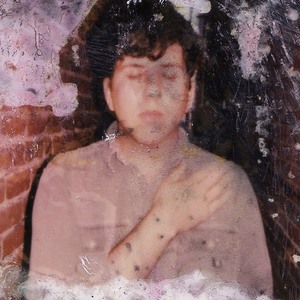How did those initial, very personal lyrics transform into Bullfighter, which also highlights the story of Sidney Franklin—the first American matador in Spain.
The idea first came to me during a meditation. Often when sticky or fascinating phrases come up to me while meditating, I’ll write them down: bullfighter. So I looked up the first American bullfighter, and found Sidney Franklin—and found out he was Jewish. He grew up in Brooklyn, had a really bad home life. He scorned being Jewish, so much so that he basically created a new character for himself. He tried to distance himself from his culture so much that he ran away. He was violently gored during his career, and he hobbled through the rest of his life until he died in an old folks home [in 1972]. It felt tragic to me.
And the parallels felt interesting. I have this super American name—no traces of my Steinberg family name. And I feel so far removed from my culture, just like this guy did. Beyond the Jewish part, also—I mean, I’ve lived my whole life as a drummer and now I’m diving into the songwriter piece. The EP cover is a decapitated bull’s head. This whole process is a self-decapitation; I’m trying to start over and get back to the beginning. And I think the analogy is there with all of us.
So as you researched Sidney, what captured you the most? And how did his life really factor into the songs you were already writing?
I didn’t want to do a Sufjan Stevens thing: like writing a song about John Wayne Gacy, where it’s very direct. I wanted to keep these songs elusive and ethereal, but also retain the intensity of what I’m talking about. The first song in the cycle is “Bullfighter,” which is the clearly about Sidney. In 1931, he got gored by a bull and it ripped right through his abdomen—I sing, “The sacred sight of the animal let loose, the emblem tore my abdomen in two.”
In Spain, Sidney was close with Ernest Hemingway. There’s speculation that they were actually lovers, but neither of them would admit their bisexuality. To be Jewish and queer, for Sidney, I’m sure felt super, super unacceptable. So he’s posing as this matador, weighted down by the knowledge of his own truth. That’s the chorus of the song: “Weighted lovers living in despair.”
The sound of these four songs is far different than the music you’ve created in the past—from Lithuania to Dr. Dog or your last solo album. When did the idea surface to use a string quartet?
From the beginning, really. I want all my solo projects to be different. After this, I’m sure I won’t make another gothic-sounding string record. I long for the days when a Neil Young would put out Harvest, then a few years later put out Trans, this wild vocoder album. I get really inspired when a musician takes a risk that could lose a lot of people. If you’re not pushing and challenging yourself, I just don’t see the point. You have to have some skin in the game and try to challenge yourself with every release.
People might like this or hate it, but I’d rather it be polarizing than sound exactly like a Dr. Dog record or Palisades.
Not only the style is different for you, but the tone. This is really heavy, even spooky music.
The word ‘fighter’ is intrinsic to the nature of the project – it’s a fighting piece of music. I don’t want people to passively listen to it. if it scares the shit out of you, that’s great.
I’m usually a pretty happy go lucky guy, and friends are asking me why I made such a scary, unsettling record. I feel like in my art, I’m trying to take the things from my subconscious that are darker, but I’m not necessarily suffering through that stuff. People find meaning in spite of suffering – I think about that quote [from Holocaust survivor Viktor Frankl] a lot.
The cover of Bullfighter was painted by Cal Schenkel—who also famously created cover art for Frank Zappa, Captain Beefheart and tons of others. How did that connection come about?
I used to play with the Zappa alumni, and Cal was aware of me because he stays in touch with everyone. We were Facebook friends. Last year my mom bought me a Cal piece for my apartment. When it came time to decide the artwork for the EP, I was wracking my brain. And I thought maybe I’d just email him, just to see. He got right back to me—and he doesn’t live that far from Philadelphia, so we had a lot to talk about.
But I still didn’t know what I wanted on the cover. I meditated on it. I closed my eyes and the image that you see is what I saw in my mind. He turned the art around in a week, and it’s so him — I was really happy it retained all the qualities about his art I love. It’s kind of cartoonish, a little grotesque. But doesn’t feel threatening. It’s a cathartic picture, not just a dark picture.
Between this EP, playing with Natalie and releasing a Dr. Dog record — has 2018 been overwhelmingly busy, or perfectly busy?
Overwhelmingly busy. It’s been a lot. Next up, I’ve got a tour with Natalie in January, then Dr. Dog in February. But my March to August is totally open. I’ll use that time to finish the 12 songs for my next solo record. Then, maybe, I’ll take some time off.



No Comments comments associated with this post